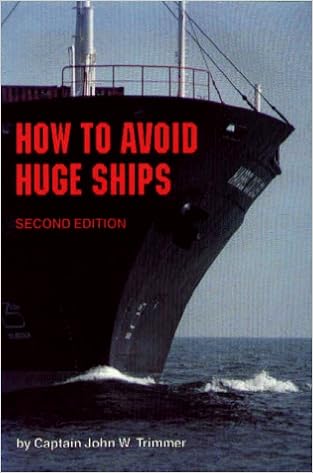Captain Ralph
Veteran Member
Geez guys
In this case with a recreational powerboat, and a sailboat under sail, the sailboat has the right of way.
Snail Boter.
Geez guys
In this case with a recreational powerboat, and a sailboat under sail, the sailboat has the right of way.
except...
Rule 3
The term "vessel engaged in fishing" means any vessel fishing with nets, lines, trawls, or other fishing apparatus which restrict maneuverability, but does not include a vessel fishing with trolling lines or other fishing apparatus which do not restrict manageability.
A recreational fishing boat has NO rites of way.....Am I wrong in also thinking that the Rule is referring to a commercial vessel engaged in fishing, rather than a recreational fishing boat?
This is the big question. Not in any way suggesting that the following is the case here, but how easy is it for a sailboater to claim in court that his or her motor was off even though he or she was motorsailing?
This is the big question. Not in any way suggesting that the following is the case here, but how easy is it for a sailboater to claim in court that his or her motor was off even though he or she was motorsailing?
Kinda of Gross tonnage wins???I have always adhered to the tonnage rule, if it is bigger than me it makes the rules.
This is the big question. Not in any way suggesting that the following is the case here, but how easy is it for a sailboater to claim in court that his or her motor was off even though he or she was motorsailing?
v
Or just follow the rules like you are supposed to.....


v
Or just follow the rules like you are supposed to.....
The rules are quite simple:
Don't hit anyone or let yourself get hit
Much like driving a motorbike here in Vietnam
Geez guys
In this case with a recreational powerboat, and a sailboat under sail, the sailboat has the right of way.
A recreational fishing boat has NO rites of way.....
A commercial fishing boat showing a basket or proper lights is RAM.
But that's the point. In his example the sailboat was overtaking the power boat. The precedence list that most are familiar with is for crossing situations. When overtaking, the overtaking boat is the burdened vessel.
Each rule is not in a vacuum.
Each rule covers circumstances that try and show how and why responsibilities change.
Common sense would say yes..but not in a vacuum like some trying to bleed one rule into another.
Large ships are not by nature unmanueverable, neither are tugs and tows. Until in certain situations which the rules cover.
Sailboats by nature aren't limited in their ability to manuever either...but yes certain situation they are less so than many power vessels. Heck, even with using the motor for propulsion their SAFE manuevering is in question sometimes....and thats one case where the rules aren't perfect.
All these partial understandings of the rules ultimately leads to misguided interpretations of specific rules...but overall, if you act like a "prudent seaman" you are following rule #2 which is a catch all rule for trying to avoid collisions, you might just get away avoiding collisions/on the water arguments your whole boating life.

A sailboat under sail power always has the right of way.
No it does not! I suggest you study a copy of the COLREGS.
Here is the Colreg for overtaking:But that's the point. In his example the sailboat was overtaking the power boat. The precedence list that most are familiar with is for crossing situations. When overtaking, the overtaking boat is the burdened vessel.
The arguement was expanded beyond just the collision in the article.
Some people made incorrect statements because they were referring to either just one scenario or one rule.Thus corrections were posted whether germane to the OP or not....I think that's some where some confusion is coming from.
Scratch...no not hedging the bet, a containership in a narrow channel might have stand on priveledges to sail under 65 feet, but not because he is commercial as you emphasized in post 8.
You were loosely tossing around concepts such as law of tonnage (a novice statement post #18) instead of rules...I have no idea how well you know them, but your early posts and jagon would suggest not. You may get there through some reasoning, but not from actually knowing the rules

Like reading and fully understanding the rules...Moving the goal post again I see,,,,,, You are welcome to feel that you are “absolutely right”, even as you backtracked in this post. Yes I lumped the commercial container ship with the broader pictures dealing with commercial vessels coupled with navigating in a shipping channel to boot in my original response on this thread. But it does play a role in the rules of the road.
You do not know my experience and quite possibly know a lot of others experiences here. But thankfully I am a bit more pragmatic from actually working the waters. And for that I am thankful that I do not have a bullheaded position that’s etched in stone that now changes in less than 24 hours. As you backslap as being right and everyone else is wrong, I am moving right along..got more pressing things to do today.

The distinction I believe is whether the vessel (private or commercial) flies the lights or dayshapes or radio calls to make that distinction.
Even towing, I did not see anything in my USCG copy of the rules that says "commercial towing".... just "a vessel towing shall...."
TT, where is "commercial" mentioned in towing?
Plus, a towing vessel is just a power vessel UNLESS it declares itself RAM by radio, lights and/or dayshapes
